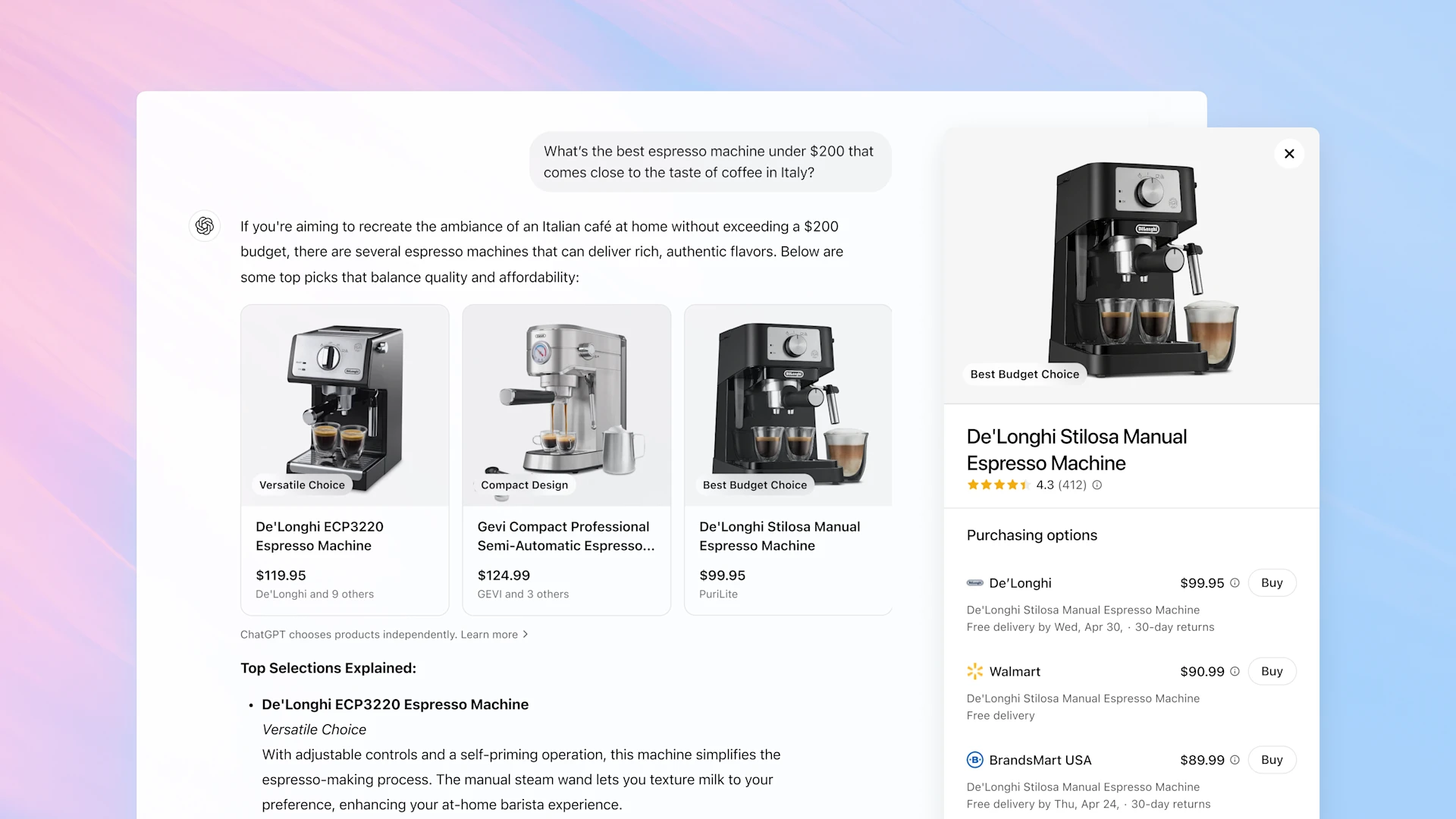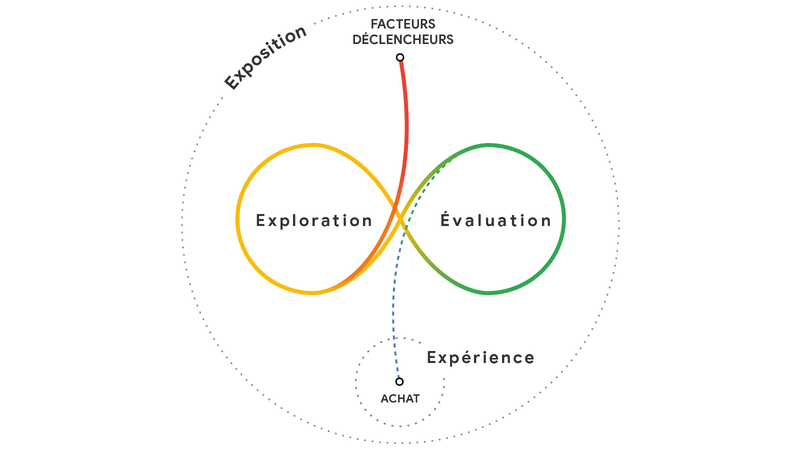New feature: product search in ChatGPT
More and more internet users are turning away from Google in favor of ChatGPT for their searches.
According to an Adobe study conducted with U.S. consumers, 77% of ChatGPT users use it to search. A growing share of these users are increasingly using it to compare options or ask for purchase recommendations.
In response to these emerging behaviors, OpenAI is gradually rolling out a new feature called Search Product Discovery.
It can display:
- image, name, price,
- merchant source (Shopify, Instacart, Klarna…),
- and a direct purchase link.
These suggestions are not advertisements; they’re based on structured data from commerce partners.
How Search Product Discovery works
Product search in ChatGPT isn’t always on. It’s triggered when the model detects explicit commercial intent in the query.
ChatGPT uses a combination of semantic analysis and conversational signals to determine whether the request reflects a shopping need.
Examples of prompts that can trigger the feature:
- “I’m looking for a mattress for back pain”
- “Recommend a desk lamp with a USB port”
- “Which kids’ winter boots are highly rated?”
As soon as an e-commerce partner has relevant data to answer, ChatGPT generates a curated selection directly in the thread.
This logic distinguishes informational from commercial queries, without the user having to specify that they want to “buy” a product.
A new visibility opportunity
ChatGPT now offers merchants a potential showcase integrated into the search experience.
Companies whose products are available via structured feeds can have their items displayed directly within AI-generated answers. They can thus gain embedded shopping visibility without ad auctions.

An evolution of the purchase journey
ChatGPT’s “Search Product Discovery” feature is part of a broader trend: AI-assisted conversational search.
The traditional purchase journey alternates between exploration (discovery, inspiration) and evaluation (comparison, reviews) before a decision is made.
This often non-linear process was described by Google as the “Messy Middle,” marked by back-and-forth between multiple channels (search, comparison engines, influencers, etc.). With tools like ChatGPT and this new feature, some of these steps could be centralized into a single point of interaction.

What if the next storefront isn’t yours?
For years, brands have invested everything to bring users onto their sites: optimizing SEO, building conversion funnels, and controlling every step of the journey.
But with the arrival of product search in ChatGPT, a new interface is taking hold—a layer of intermediation where the brand no longer has the first word.
E-commerce is entering an era where discovery no longer starts on a merchant site, but in a dialogue. Preparing for this transition means anticipating a future where AI becomes a full-fledged actor in the purchase journey.
Whether driven by the rise of AI or changing search behaviors, the rules of e-commerce are shifting.
Brands that adapt now will be the ones recommended tomorrow.


